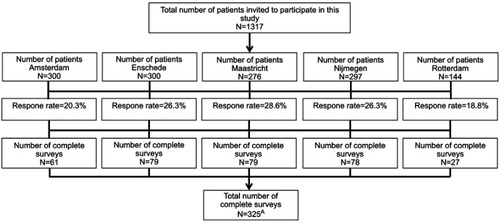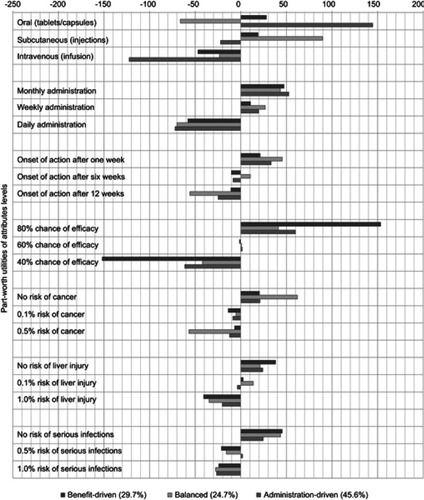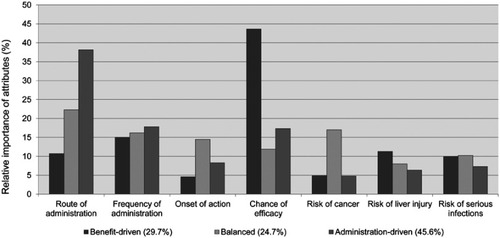Figures & data
Table 1 List of attributes with corresponding levels used in the final design of the DCE. These attributes and levels were obtained from a literature search, expert recommendations, and three focus groups with patients with RA.
Figure 1 Flow chart of survey response across study sites. AStudy site was unknown for one completed survey.

Table 2 Sample characteristics.
Figure 3 Part-worth utilities for the levels within each attribute for each subgroup, rescaled for comparability. Higher part-worth utilities represent stronger preferences for a particular level within an attribute, whereas negative utility scores were considered less attractive.

Table S1 Example of a random choice task. Twelve random choice tasks without an “opt-out” or “no-treatment” option were included in the discrete choice experiment.
Table S2 Example of a dominant fixed choice task. Two dominant fixed choice tasks without an “opt-out” or “no-treatment” option were included in the discrete choice experiment.
Table S3 Final settings latent class analysis (Lighthouse Studio: CBC, Sawtooth Software)
Table S4 Results of the identification process of latent classes in this study
Table S5 Adjusted multinomial logistic regression model to identify factors associated with subgroup membership. Reference categories for categorical patient variables were: employment status (unpaid), education level (low), current bDMARD use (no), and educational level × complexity of the online survey (low). Educational level was classified in low, moderate and high educational level. Low educational level was defined as no education, (extended) primary education or pre-vocational education, whereas high educational level was defined as education provided by universities of applied sciences and research universities

